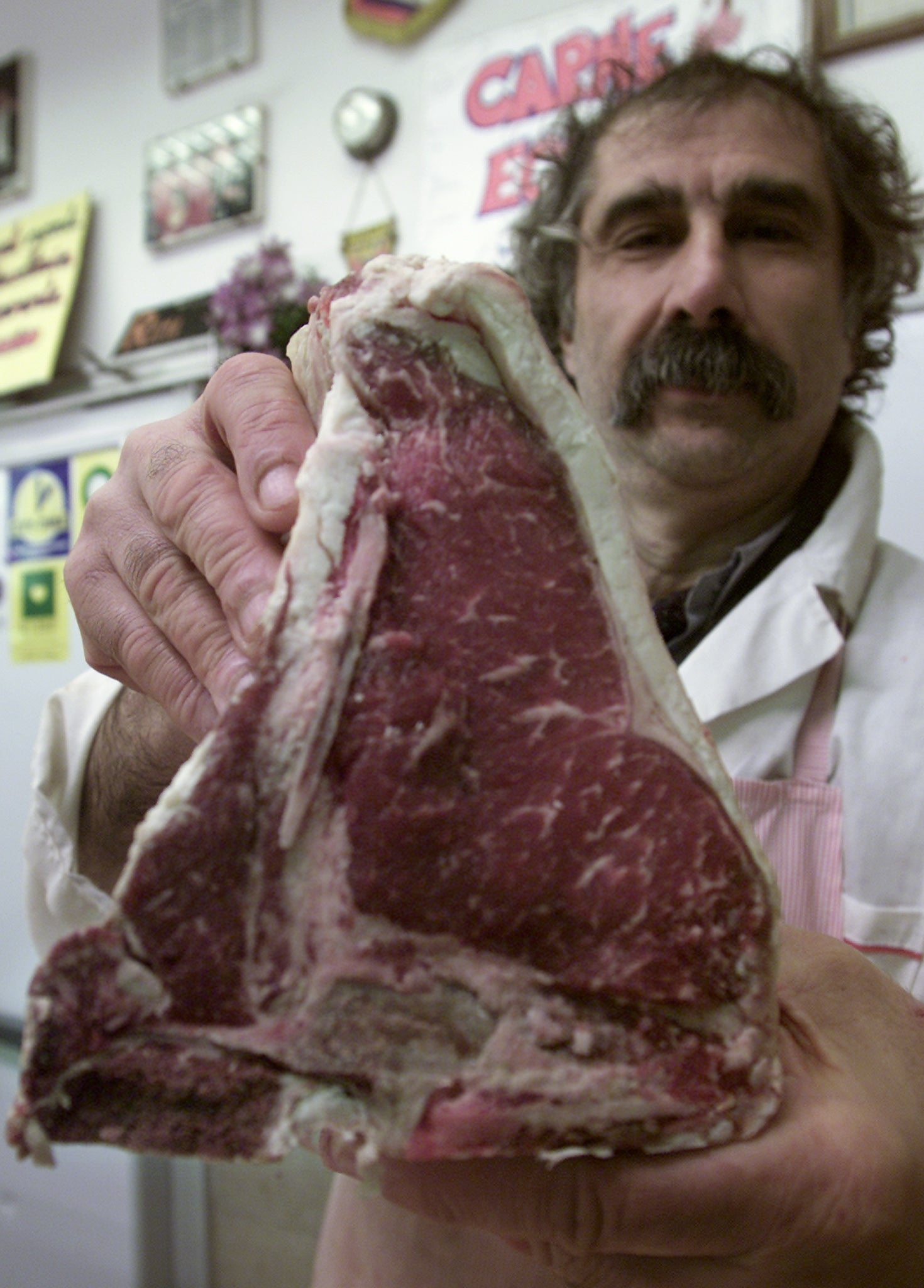Florence wants its steak named one of the world’s great cultural treasures
Good meat loves salt. That butcher’s refrain might be best expressed by the bistecca alla fiorentina—a giant, bone-in cut of beef that is dusted with salt and pepper, grilled over scorching hot coals, and served very rare. A brush of rosemary and other herbs is sometimes used to baste the steak with olive oil during cooking, and it is meant to be sliced and served family style, sauced only by its own meaty juice.


Good meat loves salt. That butcher’s refrain might be best expressed by the bistecca alla fiorentina—a giant, bone-in cut of beef that is dusted with salt and pepper, grilled over scorching hot coals, and served very rare. A brush of rosemary and other herbs is sometimes used to baste the steak with olive oil during cooking, and it is meant to be sliced and served family style, sauced only by its own meaty juice.
The bistecca is one of the classic dishes of Italy’s Tuscany region, and it’s a symbol of a culinary tradition that prizes high quality ingredients, prepared and served simply. That tradition is worth celebrating internationally, argues Dario Nardella, the mayor of Florence, who announced at a recent conference for Tuscan beef producers that the city is in the process of securing a spot for the bistecca alla fiorentina on the The United Nations Educational, Scientific and Cultural Organization (UNESCO) list of Intangible Cultural Heritage.
The thickly cut steak, which resembles an American-style T-bone, comes from the Chianina breed of cattle, a large, white Tuscan cow with a pronounced neck hump.
It’s a delicious piece of meat, to be sure. What makes it a piece of cultural heritage though?
Traditions from around the world that have already made the intangibles list include summer solstice fire festivals in the Pyrenees; falconry; and the tango. “Cultural heritage does not end at monuments and collections of objects,” says UNESCO. “It also includes traditions or living expressions inherited from our ancestors and passed on to our descendants, such as oral traditions, performing arts, social practices, rituals, festive events, knowledge and practices concerning nature and the universe or the knowledge and skills to produce traditional crafts.”
Bistecca alla fiorentina wouldn’t be the first food to be included on the list, either. Flatbread-making and sharing in central Asia; coffee customs on the Arabian peninsula and in Turkey; Belgian beer; kimchi in both North and South Korea; and the art of the Neapolitan “pizzaiuolo” have all been singled out for the distinction. The common thread running through all of these foods is the combination of particular agricultural product and a culturally specific culinary skill, as well as the communal, and often celebratory, customs involved in eating them.
Currently UNESCO is working through applications to fill 50 slots on the Intangible World Heritage list for 2019—applications for inclusion were due in March of 2018, and final decisions will be made later this fall. The nine-page nomination form, which asks questions like “What social functions and cultural meanings does the element have for its community nowadays?” reads a bit like a college application, and is due on March 31, 2019, for consideration for the 2020 list.
The reverence of food-lovers from Italy and around the world have for this particular meal suggests it fits the bill:
Whether or not it gets the designation, a genuine bistecca alla fiorentina is on the bucket list of many globe-trotting carnivores. Jonathan Gold, the late LA Times restaurant critic, gave a ringing endorsement of the dish’s intangible pleasures when he described eating it at one of his favorite restaurants, a trattoria near Montevrachi, Italy:
“The owner would come over to the table in his bloody apron and carve the massive, dripping-rare fiorentina steak he’d been cooking upstairs in the fireplace,” Gold wrote. “Grease-smeared, wine-drunk, surrounded by my family and the friends I love, those long summer afternoons were perhaps the happiest I have ever known.”